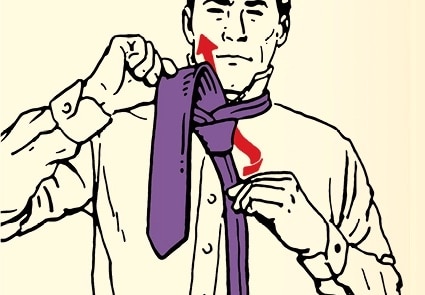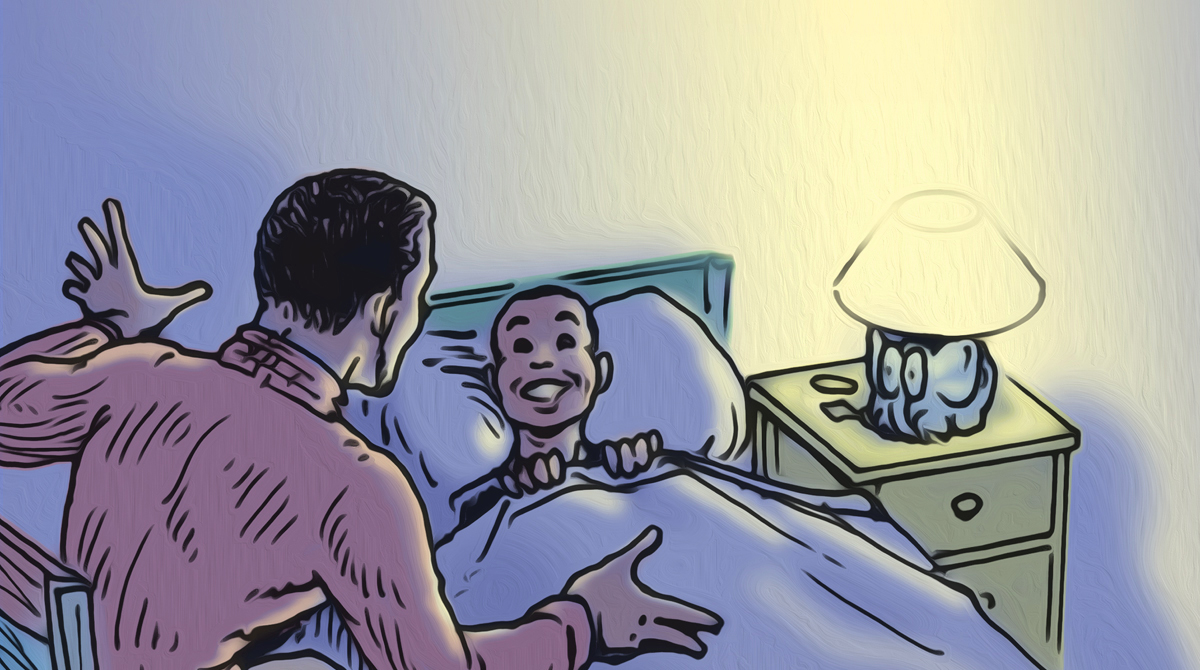
Every man needs to be able to tell a great story.
It might be for a presentation you give at work. Or for a paper you need to write.
Maybe you’re just hanging out with your buddies swapping stories. Or you’re tucking your kids into bed, and a nighttime tale is demanded.
What do you do? Where do you start?
I write books for a living—sometimes my own, sometimes in collaboration with high-profile public figures. I’ve studied the art and craft of telling stories, both nonfiction and fiction, and here’s what I’ve learned.
To tell a great story—any story—wrap it around this tried and true framework:
1) Introduce a worthy hero with a massive goal.
We use the word “hero” lightly here. A hero is your protagonist, the main character in your story. He must be likeable so your hearers or readers identify with and root for him.
Describing a massive goal is important. Usually, the bigger and more difficult the goal, the better. The hero must be going somewhere, doing something, and most important—wanting something.
The stakes must be raised as high as possible. A main character must attempt the impossible, desire the unattainable, resist the forbidden, or overcome the disastrous.
Ask: what does your hero really want?
Think of this structure in the movies or books you know.
In Star Wars, the worthy hero is Luke Skywalker. His massive goal is to avenge his father’s death by defeating Darth Vader and saving the universe from the Death Star.
In The Road Warrior, the worthy hero is Mad Max. He must drive to safety a repaired big rig filled with gasoline (spoiler alert: is it really gasoline?) to help a settlement survive, while he evades hordes of evil wheeled marauders.
In Catcher in the Rye, the worthy hero is an affable yet disaffected high school student, Holden Caulfield. He must battle the forces of insincerity at prep school and in his surrounding adult culture, both of which he interprets as caustic and false.
If I’m telling a story to my kids at bedtime, then usually I ask for their input right up front, which makes it more fun for them. Specifically, I ask them to give me a boy’s name, a girl’s name, who the boy and the girl are, and what they want most.
I might end up with Barney and Chloe, a sword swallower and a princess, who want more than anything to take a trip to Disneyland where they need to rescue their father who’s being held hostage at the top of Magic Mountain.
Well done, kids. A great story is about to unfold.
2) Plunge the hero into chaos, force the hero to fight free.
A hero can’t just waltz on over to his goal and claim it without effort. A story wouldn’t hold interest that way. Your hero’s goal must be blocked. He needs to overcome obstacles by wit, intellect, or action.
Along the way, a story must bristle with tension. Readers must continually hope or fear that something vital and necessary will or won’t happen.
Ask: what obstacles will your hero encounter on the way to his goal?
In Cormac McCarthy’s Pulitzer-winning novel, The Road, the unnamed father and his young son want to get to safety in a chaotic post-apocalyptic world. Along the way, they must battle cannibals, their own hunger and thirst, and their own grief at the loss of an important family member.
In the classic movie Jerry Maguire, a young sincerity-seeking sports agent must break free from a job that’s sucking the life out of him so he can develop a new life full of purpose, empathy, and genuine love.
In the novel True Grit, twice adapted into a movie, the young Mattie Ross sets out on an expedition to shoot the coward Tom Chaney, who has killed her father. Along the way, now traveling with the one-eyed Marshal Rooster Cogburn and the starchy Texas Ranger LaBoeuf, Mattie must fight her way free from shootouts, snakebites, and the misgivings of her traveling partners.
If you’re giving a report at work to your board of directors, it may be helpful to start with an anecdote that shows the goals of your company, the challenges your company faces, and how your company is working skillfully to overcome the obstacles and reach your goals.
3) Show how the hero overcomes.
By story’s end, tension needs to be released. A hero’s goal must be met, although perhaps in a surprising way.
Basically, we all like happy endings.
Ask: how will your hero reach his goal?
In Laura Hillenbrand’s book Unbroken, the hero is Olympic track star Louis Zamperini. He must fight for his survival on a raft in the Pacific Ocean, and then in the Japanese death camps of WWII.
At the end of the story, hope triumphs, and Zamperini safely comes home to America where he finds new faith and forgiveness. As readers, we are on pins and needles the whole way through the story until the end, when we can breathe a huge sigh of relief.
In Fight Club, a movie based on Chuck Palahniuk’s novel, we discover—(spoiler alert)—that the unnamed everyman played by Edward Norton is actually the same person as the affable yet violent Tyler Durden—dissociated personalities in the same body.
At the end, Tyler is “killed” by a bullet to Norton’s mouth, and even though the credit card company’s building is destroyed by explosives, there’s a strange feeling of resolve that results as we see Norton and his love interest, Marla, holding hands.
If you’re at a sports bar spinning a tale to your buddies about your cousin Archie, what kind of story might you tell?
Maybe Archie traveled to Tanzania to eat the world’s best yak steaks. He needed to eat the steaks because his fiancée—the absolute love of his life—had a thing for yak steaks and wouldn’t marry him unless he did. Along the way Archie encountered a band of desperate one-armed jugglers who stole his wallet. They were really rogue ninja warriors in disguise.
Your story needs to end with a carefully chosen one-liner where everything resolves. Archie defeated the ninjas. His fiancée was happy. He ate the yak steaks.
And, by golly, that yak was the best he’d ever tasted.
_______________________________
Marcus Brotherton is a regular contributor to Art of Manliness and a longtime nonfiction writer. He’s just released his debut novel, Feast For Thieves.







